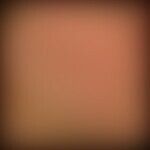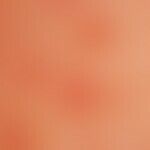Synonym(s)
HistoryThis section has been translated automatically.
Lutz 1860
DefinitionThis section has been translated automatically.
Common, completely harmless keratinization disorder of the hair follicles, probably autosomal dominant inheritance. Occasionally combined with mild or pronounced ichthyosis vulgaris and in atopic diathesis.
You might also be interested in
Occurrence/EpidemiologyThis section has been translated automatically.
The prevalence of keratosis pilaris is reported to be close to 50% of the population.
EtiopathogenesisThis section has been translated automatically.
Although keratosis pilaris is a common disease, the exact etiology is still unknown.
- 1) Genetically determined keratosis pilaris (hyperkeratosis of the infundibulum of the hair follicles) which leads to atrophy of the hair. The long hair is not affected in this mild form. This form of the disease is inherited autosomal-dominantly. Mutations in the filaggrin gene correlate with keratosis pilaris, as do anomalies in the Ras signaling cascade. The follicular abnormalities observed in keratosis pilaris may be due to mutations in the filaggrin gene. Keratosis pilaris is often associated with atopic dermatitis. The mutations in the filaggrin gene suggest that keratosis pilaris is the result of a loss of normal epithelial barrier function (Thomas M et al. 2012).
- 2) Acquired form of keratosis pilaris: Keratosis pilaris is a not entirely rare side effect of therapy with tyrosine kinase inhibitors. Acquired keratosis pilaris has been described during treatment with vemurafenib and imatinib (Braunstein I et al. 2014; Leong WM 2016).
ManifestationThis section has been translated automatically.
First appearing in adolescents (no sex-relatedness) at the age of puberty. The "disease" usually extends over the entire life span, but is clearly regressive in adolescence. Persistent erythema(erythema perstans faciei - type rusticanus) may manifest in the area of the cheeks, giving a "healthy, fresh" appearance. Largely unnoticed, a complete loss of vellus hair can occur over the course of years on the extensor extremities, including the facial area. This is perceived by women as enhancing their attractiveness rather than as a "disease".
The situation is different with the loss of the long hair follicles on eyebrows or on the frontal or lateral side of the forehead. This manifestation is also possible (atrophic keratosis follicularis). Here, too, the follicle-destroying process proceeds chronically and insidiously over a period of years and cannot be influenced therapeutically.
LocalizationThis section has been translated automatically.
Mainly extensor sides of the upper arms, outer side of the upper and lower legs, glutaeal region are affected.
ClinicThis section has been translated automatically.
Innumerable rough horny plugs attached to the follicles, usually skin-colored, pointed conical, protruding above the skin level. They give the skin a granular texture. Keratosis pilaris (synonym = keratosis follicularis) can affect body regions covered with vellus hairs as well as those with bristle hairs (e.g. eyebrows) and long hairs (capillitium).
The follicular environment may be skin-colored without reaction. However, it is usually characterized by a ring-shaped saturated red erythema.
There is a rubbing sensation when brushing over it.
Regular acrocyanosis, also perniosis follicularis in the affected areas (type rusticanus).
When scratching out the keratoses, a coiled hair often appears.
See also the remarks under the name"keratosis pilaris syndrome".
HistologyThis section has been translated automatically.
The main histologic and dermoscopic findings of KP are hyperkeratosis, hypergranulosis, mild lymphocytic inflammation dominated by type 1 T helper cells, obstruction of follicular orifices, conspicuous absence of sebaceous glands, and abnormalities of the hair shaft in KP lesions (occasionally an upturned vellus hair enclosed by horny masses is found) but not in unaffected skin sites. Alterations in barrier function and abnormal paracellular permeability were found in both the interfollicular and follicular stratum corneum of lesional KP, which correlate ultrastructurally with impaired maturation and organization of the extracellular lamellar bilayer (Gruber R et al. 2015).
Differential diagnosisThis section has been translated automatically.
Ichthyosis follicularis: identical clinical and histological picture. However, other signs of ichthyosis are absent in keratosis pilaris.
Lichen ruber foll icularis: no keratotic follicular structure. Atrophy of vellus and long hairs. Histologically: dense perifollicular lymphocytic infiltrate with adnexotropia.
Mucinosis follicularis: short time of onset, acute flare-up of follicular papules, usually mildly pruritic. Histology is diagnostic.
Folliculotropic mycosis fungoides: Follicle-emphasized red, violently pruritic papules. Histology is diagnostic.
TherapyThis section has been translated automatically.
Nourishing and keratolytic external measures. Greasing lotions (base lotion (DAC)) or creams; possibly addition of urea in a 5-20% concentration (e.g. Nubral cream or 5% urea in Excipial Hydro- or Lipolotio, see formulations), salicylic acid (2-3%) or common salt (5-10%), possibly their combinations. Even highly diluted (0.005%) tretinoin creams can improve the skin condition.
It is important to use detergents such as syndets or soaps sparingly in personal hygiene. Instead of detergents, use hydrophilic body oils as a wash substitute (e.g., hydrophilic body oil or ready-to-use oil baths, which are generally used as oil baths). Use oil or saline baths for bathing.
Internal treatment measures are not necessary or indicated.
Remarkably good results are reported from laser therapy, with the QS:Nd YAG laser in particular offering advantages (Kechichian E et al. 2020; Ma H et al. 2015; Maitriwong P et al. 2020).
Progression/forecastThis section has been translated automatically.
Notice!
This gradual loss of follicles is not, however, perceived as a "symptom of illness"! S.a. Keratosis follicularis spinulosa decalvans.Note(s)This section has been translated automatically.
LiteratureThis section has been translated automatically.
- Braunstein I et al. (2014) Vemurafenib-induced interface dermatitis manifesting as radiation-recall and a keratosis pilaris-like eruption. J Cutan Pathol 41:539-543.
- Gruber R et al. (2015) Sebaceous gland, hair shaft, and epidermal barrier abnormalities in keratosis pilaris with and without filaggrin deficiency. Am J Pathol 185:1012-1021
- Ibrahim O et al. (2014) Treatment of keratosis pilaris with 810-nm diode laser: a randomized clinical trial. JAMA Dermatol 151:187-19
- Kechichian E et al. (2020) Light and Laser Treatments for Keratosis Pilaris: A Systematic Review. Dermatol Surg 46:1397-1402.
- Leong WM (2016). Nilotinib-Induced Keratosis Pilaris. Case Rep Dermatol 8:91-96.
- Ma H et al. (2015) Unilateral keratosis pilaris occurring on linear hypopigmentation patches: a new variant of keratosis pilaris in an Asian? J Dermatol 42:437-438
- Maitriwong P et al. (2020) Innovative 1064-nm Nd:YAG Laser Significantly Improves Keratosis Pilaris, A Randomized, Double-Blind, Sham-Irradiation-Controlled Trial. Lasers Surg Med 52:509-514.
- Nutz MC et al. (2025) Line-field confocal optical coherence tomography in lichen planopilaris and frontal fibrosing alopecia: A pilot study. J Dtsch Dermatol Ges 23:173-181.
- Shimizu A et al. (2016) Generalized keratosispilaris-like eruptions in a chronic myelogenous leukemia patient treated with nilotinib. J Dermatol doi: 10.1111/1346-8138.13336.
Thomas M et al. (2012) Keratosis pilaris revisited: is it more than just follicular keratosis? Int J Trichology 4:255-258.
Incoming links (37)
Adiposity skin changes; Ataxia teleangiectatica; Erythema perstans faciei; Follicular keratoses; Follicular perniosis; Folliculitis granulomatosa perforans; Folliculitis perforating; Frontal fibrosing alopecia; Graham-little syndrome; Ichthyosis follicularis; ... Show allOutgoing links (21)
Acrocyanosis; Atopic dermatitis (overview); Atopic diathesis; Cream; Erythema perstans faciei; Follicular mucinosis; Follicular perniosis; Folliculotropic mycosis fungoides; HRNR Gene; Ichthyosis follicularis; ... Show allDisclaimer
Please ask your physician for a reliable diagnosis. This website is only meant as a reference.



































